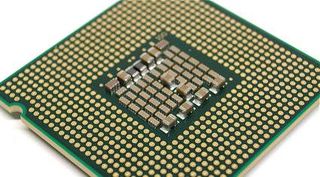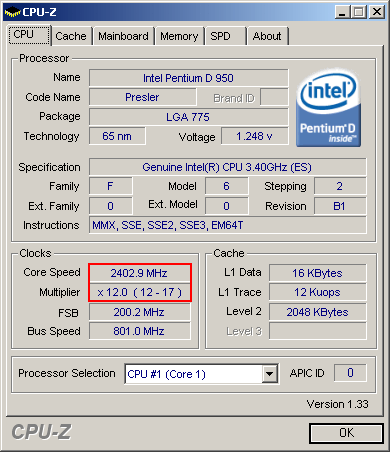Live Memory Test: Overclock 'Em Till They Crash
Overclocking Test Setup For Both Platforms, Continued
Only Gigabyte was able to program a bug-free BIOS in the given timeframe. In our test, where the machines need to cope with a large range of clock speeds, extreme demands are made on the registry entries stored in the BIOS. For this reason, Gigabyte made a special BIOS just for this test, something not every company could achieve. More information is available in the compatibility test results for the Intel Pentium Extreme Edition 965.

Both test systems use almost identical CPUs: Intel Pentium EE 955 and Intel Pentium D 950.
Both test platforms use almost identical processors: an Intel Pentium EE 955 and an Intel Pentium D 950. Since overclocking the memory requires the system front side bus to be increased, we lowered the processor core clock to the lowest possible level in order to prevent the CPU from becoming the factor responsible for any instability experienced when overclocking.
At the beginning of the live stress test, both processors start at a far lower clock speed than they usually would: 2.40 GHz instead of 3.46 GHz and 3.40 GHz. As we increase the FSB speed to raise the memory clock, the CPU clock speed rises synchronously along with it. Processors with a Presler core are manufactured using 65 nm technology, and we have known for a long time that they run solidly up to 4.26 GHz. As a result, a system crash can only be the result of memory failure at high memory speeds.


Stay on the Cutting Edge
Join the experts who read Tom's Hardware for the inside track on enthusiast PC tech news — and have for over 25 years. We'll send breaking news and in-depth reviews of CPUs, GPUs, AI, maker hardware and more straight to your inbox.
Current page: Overclocking Test Setup For Both Platforms, Continued
Prev Page Overclocking Test Setup For Both Platforms Next Page Overclocking Test Setup For Both Platforms, ContinuedTom's Hardware's dedicated news crew consists of both freelancers and staff with decades of experience reporting on the latest developments in CPUs, GPUs, super computing, Raspberry Pis and more.
Most Popular


